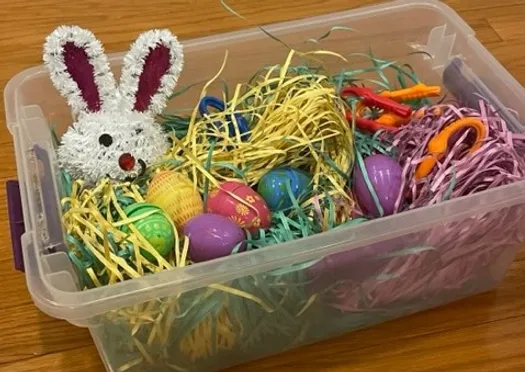
What is a Sensory Bin?

A sensory bin is a container or bin that has different textured items in it and provides kiddos with an opportunity to explore new sensory input through their hands. They can come in many different varieties with the purpose of providing kiddos with different textures to explore and new sensory input, to improve their sensory processing skills.
Who would enjoy a Spring Sensory Bin?
Sensory bins are most commonly used by occupational therapists who are working with children on improving their sensory processing skills. However, sensory bins are becoming more popular and are also a great activity for typically developing children or children without sensory difficulties. All kiddos develop sensory processing skills and can benefit from new sensory experiences, regardless of whether or not their current abilities lead to some challenges.


What are the benefits of a sensory bin?
Sensory bins offer so many benefits to kiddos. They provide a new experience for kiddos to explore different textures with their hands. Our sense of touch is our largest sensory system and is one of the most important.

Touch is one of the first sensory systems to develop and actually develops before we are even born. It’s what connects us to others and our environment. Touch is the sense that makes us feel safe. This is why skin-to-skin contact is so important for newborn babies and their parents as it enhances bonding. It makes sense why our babies and littles want to be held all the time. This a good thing!
By exploring new textures in a sensory bin. the sensory systems in kiddos are challenged and continue to develop. It can also strengthen their confidence when exploring new activities and experiences.
Sensory bins can be especially beneficial for those kiddos who have sensory processing difficulties. Some of the kiddos I’ve worked with seek out sensory input and love to touch and feel everything! The sensory bin gives them the sensory input they’re seeking and meets this need and can help calm their bodies. Some of the kiddos I’ve worked with are sensitive to different textures and do not like exploring new items. These kiddos might be sensitive to different foods as well. The sensory bin can be a way to introduce them to new textures in a safe manner to challenge their sensory processing skills and become more confident with exploring new textures.
It’s really fun! A sensory bin provides a child with a variety of sensory inputs, to sustain their attention and to have lots of fun with their friends and caregivers.
How do you make a Spring Sensory Bin?
Let’s talk about how to make a Spring Sensory Bin. The good news is there’s no one right way to do this, so be creative and have fun! Below I have a few suggestions listed that I’ve included in my Spring Sensory Bin for my little bunny.
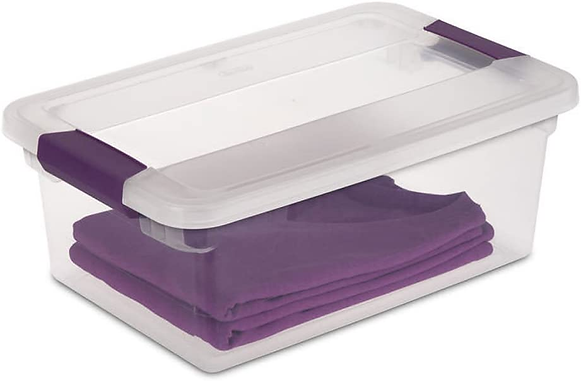
To start, I highly recommend this storage bin and use it for all of my sensory bins. When I rotate sensory bins, I take the items out put them in a plastic bag for another time, wipe down the bin, and put new items in. I love this bin because it’s such a great size and it has a top that locks.
Parents, this is helpful for when you might want to keep it out of reach of your little ones. I’ve been doing sensory bins with my little bunny since she was 6 months old…. but that’s just me, an OT Mom. Safety first! If your kiddo likes to put items in their mouth, make sure that you are supervising play and put the bin out of reach when you are unable to be fully present with them. I am a BIG fan of making messes with kids, however, as a mom, I know there is a time and place for this. This bin is helpful for containing the mess when needed.
Therapists, I also like this bin because when I was an early intervention therapist it was really easy to bring this bin from home to home and play with multiple kiddos a day. Another tip is to lay a blanket under the sensory bin to make cleanup a breeze!
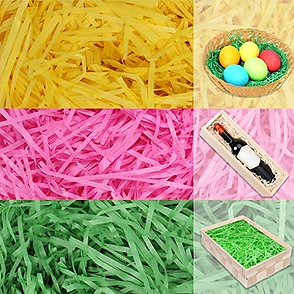
I like to start my Spring Sensory Bin with spring grass. These can come in different colors and different textures. This is the one I used for my sensory bin. This grass is often a texture that we don’t experience in everyday life and can be new and really fun, plus they come in beautiful spring colors.

Of course, our Spring Sensory Bin needs eggs! I like the eggs that open and close. When a kiddo opens and closes the egg they’re working on bilateral coordination or the ability of both hands to move together to complete a task. This is a really important skill and helps us with many daily activities like dressing and playing with different toys. Plus, you can hide things in the eggs to make it extra fun like small animals or treats. These eggs that I’ve linked here are great because they already have windup toy animals in them. Who doesn’t like wind-up toys?

Carrot and Rabbit Squeeze Toys
These carrot and rabbit squeeze toys are so cute and they can be a really good stress relief for those kiddos who like to squeeze things and get a little bit of that deep pressure input to help calm their bodies.

I love adding tweezers to all of my sensory bins. These are a fun way to work on grip strength and help kiddos develop grasping skills for coloring and writing activities

These scoopers are amazing and I use them in all of my sensory bins as well! These are great for working on scissor skills with your little ones as well as strengthening their hands.
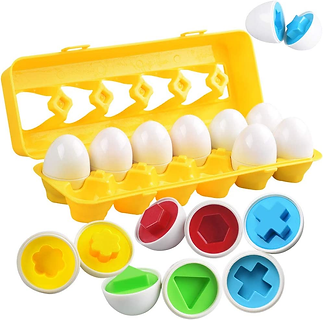
These matching eggs are another great activity to put into the Spring Sensory Bin. For an added challenge you can separate the eggs and hide them in the grass. You can have your kiddo search for them, find the matching shapes, put them together, and put them into the egg carton.
You can also add in anything else you find that is fun and spring themed. What’s also great is many of these items can be used for different sensory bins. Stay tuned! The idea is for this Spring Sensory Bin to be a fun way to engage with new textures with a little bit of an added challenge.
How do you play with a sensory bin?
There are many different games and activities you can play with your kiddo in the Spring Sensory Bin. I like to start off by just letting kiddos explore the new textures and toys, observing what they’re drawn to, what they like to touch, and don’t like to touch. This is an opportunity for them to talk about how the different textures feel. You can help them by giving them language to describe their experience. Do you like how that feels? Is it soft? Is it squishy?
You can play a game by hiding toys in the grass and having the kiddo look for them. This works on developing a kiddo’s tactile discrimination or the ability to figure out what something is using only our sense of touch and without using vision. This skill is important when we’re reaching in our bags to find our keys or a pen.
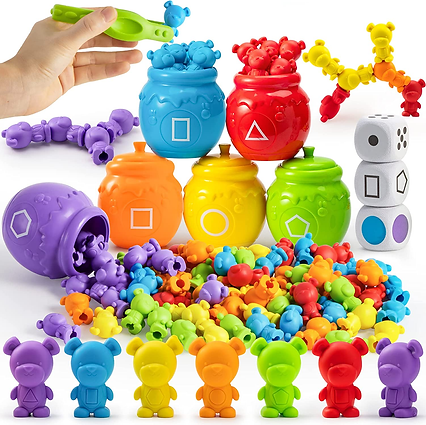
There are many other games you can play in the Spring Sensory bin. One of my favorite toys, in general, is Bears and Honeypots and I use these in all of my sensory bins. With the Spring Sensory Bin, you can hide the bears in the eggs, or you can just hide them in the grass. I like this because kiddos can find the bears and then sort them into a matching honeypot. You can also work on counting and color identification. If you have a school-aged kiddo, you can work on addition and subtraction with the Bears and Honeypots in the sensory bin. Who says learning can’t be fun and must happen at a desk? For an extra challenge, encourage your kiddo to use tweezers to pick up the bears and release them into the honeypots.
What if my kiddo doesn’t like the Spring Sensory Bin?
It is really important to explore the Spring Sensory Bin in a safe manner with your kiddo. What I mean by this is letting your kiddo explore new textures at their own pace and feel like they are in control. If they’re all done and they don’t want to play anymore, respect that. If they don’t want to touch an item and need time to warm up, respect that. Let your kiddo know that they’re in control of this activity and that they don’t have to do anything they’re not comfortable with. Their body, their choice!
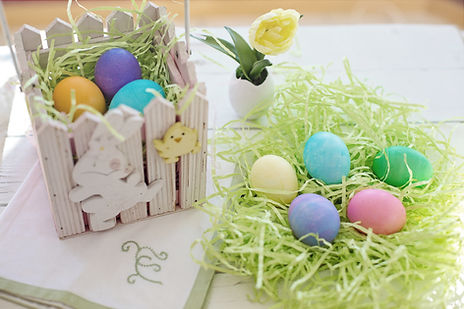
Pressuring to touch a texture they don’t want to will increase their fear. As I mentioned before our sense of touch is so important and is what grounds us and makes us feel safe. We want to make sure our kiddos feel safe when exploring new activities. For littles, the biggest way we can help them feel safe is by letting them know that they’re in control and that we respect them and how they feel. If your kiddo does not want to touch a texture, take that as a sign that their feeling nervous about it, instead of not wanting to engage. Contact me for other tips and strategi

The most important thing is that this is a fun activity! If your child’s not feeling up to it and doesn’t want to play that’s okay, put it away and save it for another day. Some kiddos need multiple exposures to an activity before they’re willing to interact with it. and that’s absolutely okay.
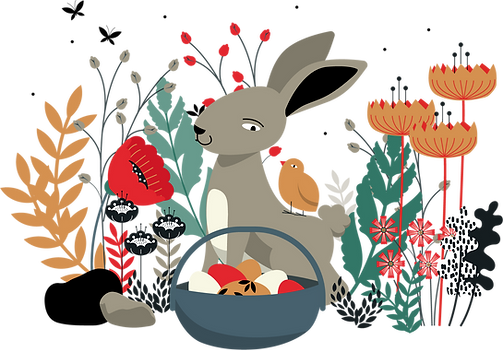
Bonus!
One of the great things about the Spring Sensory Bin is that if your family celebrates Easter, you can also use these toys and grass in their Easter Basket. This is another option for your Easter Basket that’s fun and sugar-free!
Please contact me with any questions. This post was created by Marra Robert, OTD, OTR/L and contains affiliate links
